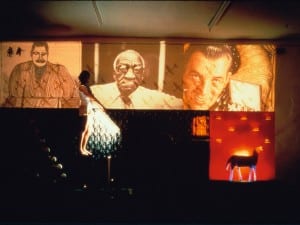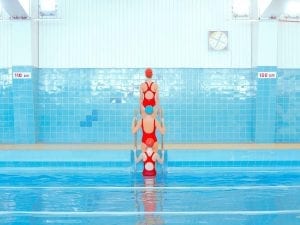The 81st edition of the Whitney Biennial — the longest-running survey of contemporary art in the United States — returns this year with a line up that features 71 artists and collectives working between digital art, film, photography, painting and sculpture. The subtitle of the exhibition, Even Better Than the Real Thing, takes inspiration from a U2 song of the same name. It reflects on topics of “authenticity,” in the midst of a nation that is facing increasing erosion of civil liberties, from the recent overturning of Roe v. Wade to a growing number of states banning gender-affirming health care. The exhibition title responds to these developments, and draws allusions to a long history of deeming people of marginalised race, gender and ability as less than real. From an immersive five-screen work by British filmmaker Isaac Julien, to a neon installation by conceptual artist Constantina Zavitsanos that “levels the playing field” for people of all abilities, the Biennial promises a representative display of experiences. Here we’re highlighting a list of works that engage with the complexities of representation and identity in contemporary America.
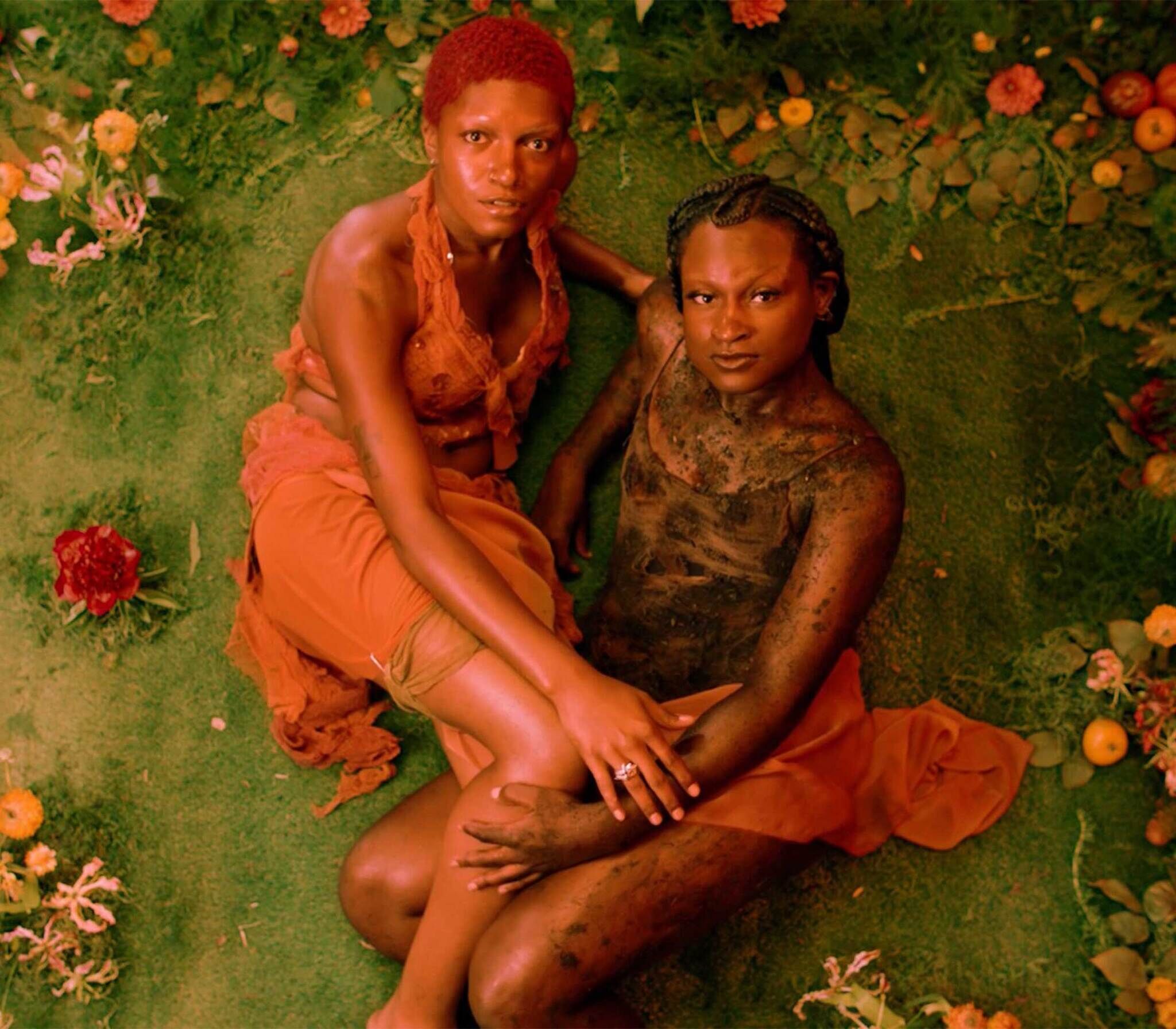
Gbenga Komolafe and Tee Park | Winter Insect, Summer Flower
In Winter Insect, Summer Flower (2021), viewers follow a transgender woman through the seasons, observing her life through cycles of love, loss, pain and rebirth. Combining live action and computer generated imagery, Gbenga Komolafe and Tee Park’s film traces a vivid between landscape, gender and sexuality. As we traverse through spring to summer, guided by a moth, we encounter moments of intimacy with the protagonist’s lover, only to transition gradually into the desolation of autumn and the starkness of winter. The experimental work uses a circular narrative to explore the evolving self. Park explains, “Personally, I wanted to deconstruct the whole narrative of “body as temple.” It feels reductive. I’m like—my body is a car, a used car. At its most fundamental, I wanted to show bodies in their most raw.”
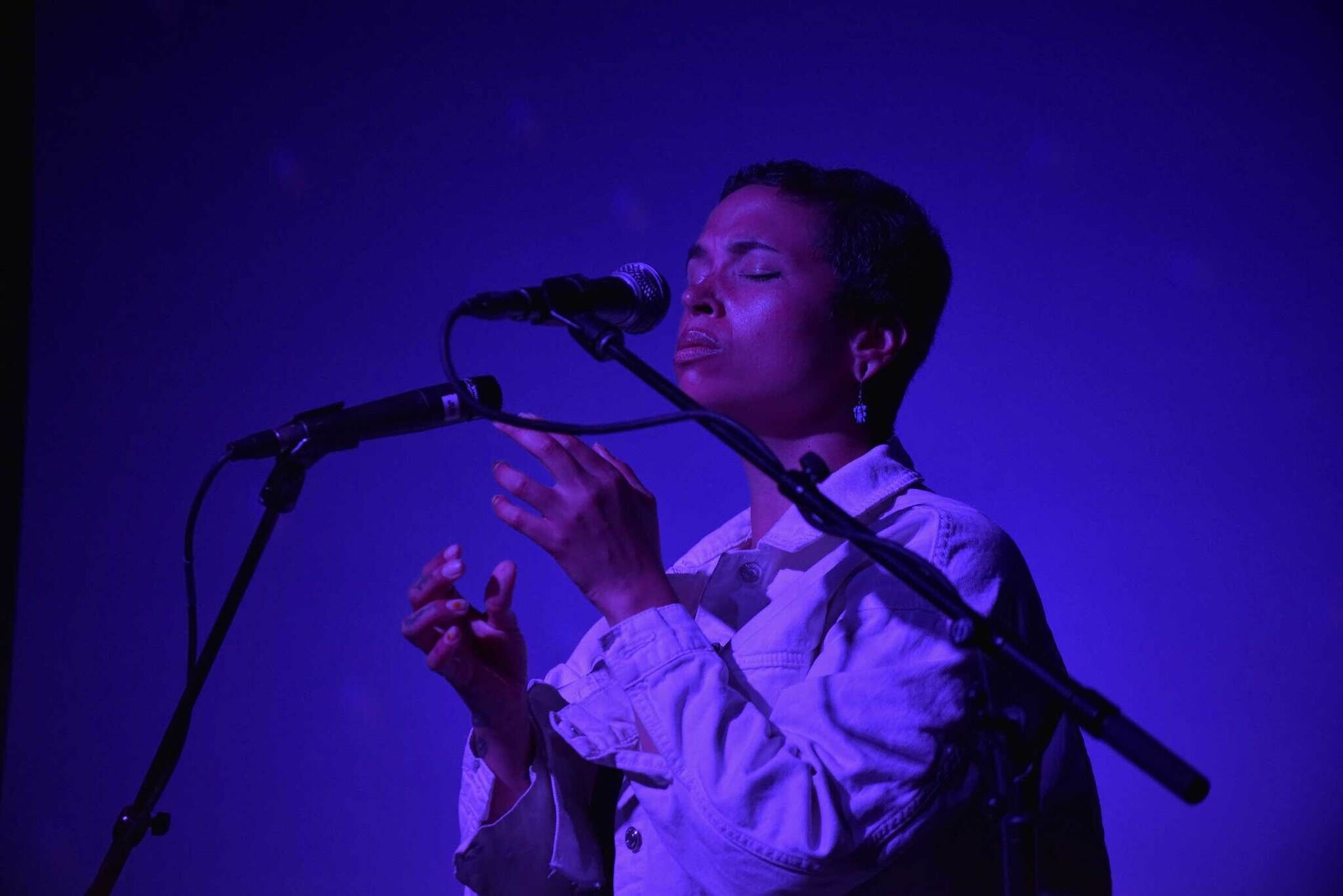
Holland Andrews | Elevator / Stairwell
American singer, composer and performance artist Holland Andrews has composed two sound works for the Biennial — one for the stairwell and the other for the large elevator nearby. Air I Breathe: Radio, is made up of entirely vocal sounds that at times have an ambient or musical quality, moving between dissonance, harmony and melody. The work meditates on the sensation of receiving information on multiple channels, as if the mind were switching stations on a radio. Hyperacusis Version 1: Sleeping Bag, works with voice and mechanical sounds, including those made by the elevator, to create a restorative space. Andrews plays with perceptions of the machine hum, as audiences are left to wonder whether the sound is intentional or not.

Isaac Julien | Iolaus/In the Life (Once Again … Statues Never Die)
Isaac Julien’s (b. 1960) work transcends western narrative structures. He questions perceptions of time through film, dismantling restrictive genre conventions and the boundaries between artistic mediums, incorporating dance, paint- ing, photography and sculpture into his practice. On show at this year’s Biennial is Once Again…(Statues Never Die)(2022), a film that explores the relationship between Albert C. Barnes, an American collector of Afrcan material culture, and the philosopher and critic Alain Locke, widely known as the “Father of the Harlem Renaissance.” The installation also includes sculptures by Richmond Barthé (1901–1989) and Matthew Angelo Harrison (b. 1985), opening up a conversation about Black artists’ legacies that extends across modern history. Julien poses the question: Who has the authority to speak?
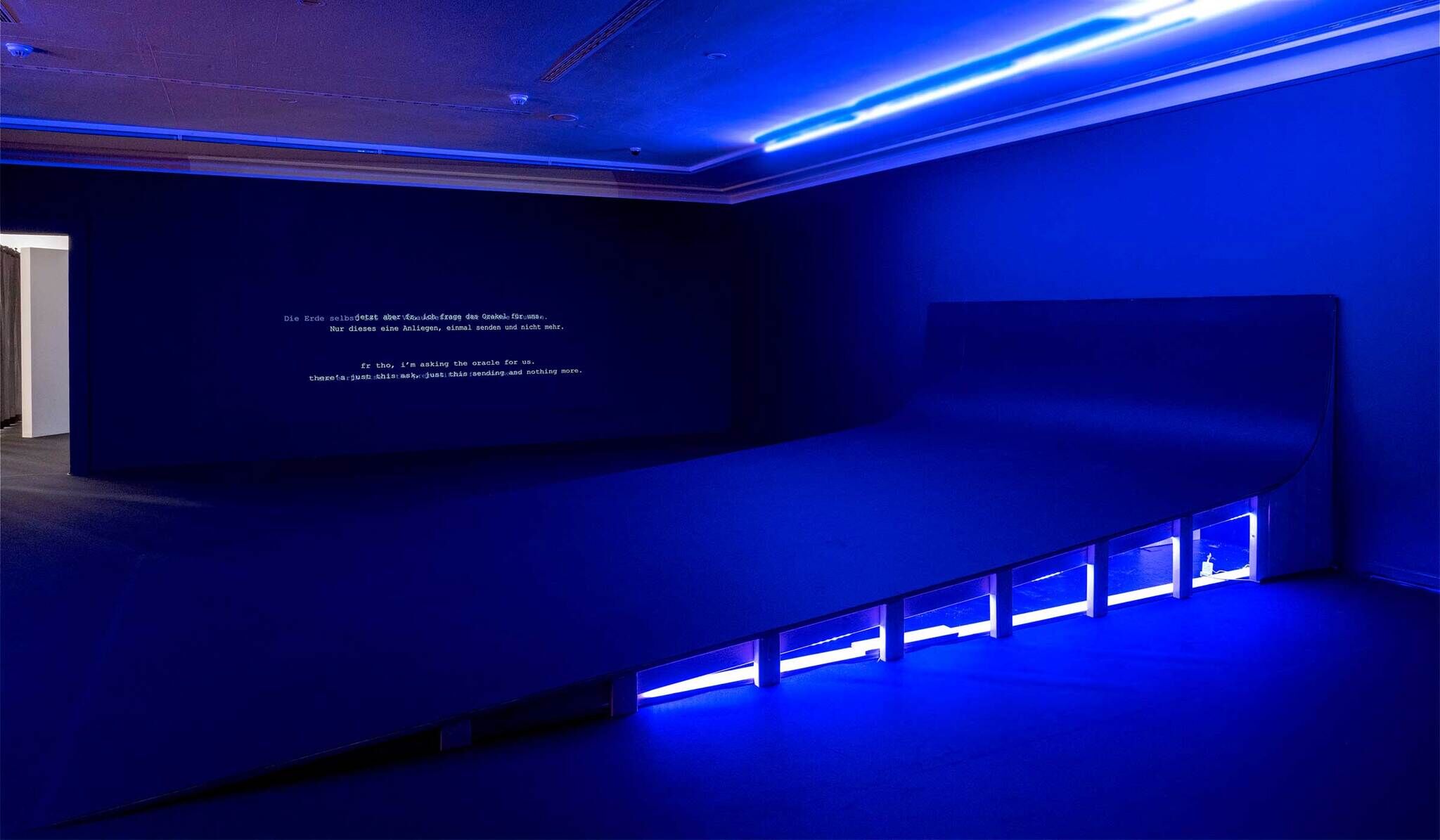
Constantina Zavitsanos | All the time and Call to Post (Violet)
Conceptual artist Constantina Zavitsanos combines two works together in a single installation characterised by a blue-violent illumination. Here, a plywood ramp rises from the floor. Viewers are invited to walk upon the structure, underneath which a set of speakers emit an infrasonic sound frequency of 5Hz, a “substantial measure below the average threshold of audibility, 20Hz.” The noise causes the ramp to slightly rumble. This is positioned alongside a video with projected captions. When someone moves through the works, the unit is split, rendering the text illegible. Zavitsanos plays with each element, placing them on the threshold of human perception. Violet light is used, for example, as falls just within the visible spectrum. As a result, the artist draws attention to acts of sensing within the cross-disability community.

Jenni Laiti | Bivdit luosa máhccat // Asking the salmon to return
Jenni Laiti (b. 1981) is a Sámi artist and activist part of Suohpanterror, a Sweden-based group that produces visual art relating to indigenous rights and decolonisation. The artist uses film as a medium to advocate for climate justice and self-determination. In the video installation Bivdit luosa máhccat // Asking the salmon to return, Laiti enters the Deatnu River (modern day areas of Norway and Finland), where the salmon has drastically reduced due to climate change driven by exploitative hunting practices of Western companies. She runs through the riverbank in a thickly frilled, peach dress. Over the course of the film, the artist becomes one of fish that is able to return home. In turn, she reflects on the nature of Sámi belonging.
Whitney Biennial 2024 | 20 March – 11 August
Image Credits:
1. Holland Andrews, Air I Breathe: Radio, 2024. Photo by Mengwen Cao
2. Gbenga Komolafe and Tee Park, still from Winter Insect, Summer Flower, 2021. Digital video, color, sound; 11:02 min. © Gbenga Komolafe and Tee Park
3. Holland Andrews performing at Weirdo Night at Zebulon, Los Angeles, 2022. Image courtesy the artist. Photograph by Indra Dunis
4. Isaac Julien, Iolaus/In the Life (Once Again. . . Statues Never Die), 2022. Inkjet print on Canson Platine Fibre Rag, 59 × 78 3/4 in. (150 × 200 cm). © Isaac Julien. Courtesy the artist and Victoria Miro, London
5. Constantina Zavitsanos, Call to Post (Violet) and All the Time, 2019 and 2021 (installation view, Helmhaus, Zurich, 2021). Plywood, two-channel sound at 5–20 Hertz, transducers, and wire; two-channel overlapping open captions, 240 x 144 x 60 in. (609.6 x 365 x 152.4 cm). Photograph by Zoe Tempest. Image courtesy the artist and Helmhaus, Zurich
6. Jenni Laiti, Bivdit luosa máhccat // Asking the salmon to return, 2022



